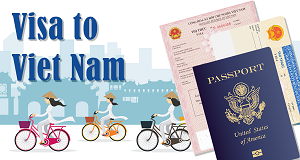Tourism industry cries out for foreign cash
HCM CITY (March 11, 2003) — The country’s tourism sector must devise a specific strategy to attract the large amount of foreign direct investment needed to develop the industry, according to a Government tourism body.
Deputy director of the Viet Nam Tourism Research and Development Institute, Pham Trung Luong, said the scheme must include policies that encourage foreign investors to construct tourist facilities of international standards.
The plan should also encourage development of remote, rural localities that have tourism potential.
Viet Nam National Administration of Tourism statistics show foreign investment in the domestic tourism industry peaked from 1993 to 1996. During the four year period, the industry attracted an annual average of 46 projects, accumulating a combined capital investment of nearly US$1.48 billion.
However, foreign investment dropped dramatically during 1998-2001, when the industry attracted just four projects and $214.6 million in capital per year.
Deputy director of the administration’s Planning and Investment Department, Tran Tien Nghi, attributed the drop in FDI to the country’s unattractive investment climate and regional economic downturn.
"Foreign investment in Viet Nam and the tourism industry began showing signs of recovery last year following the Government’s efforts to improve the local investment environment," Nghi said.
Luong said the Government’s new policy to financially support the development of tourism infrastructure had spurred foreign businesses to further invest in the industry.
The policy resulted in 20 tourism projects with combined capital of $150 million last year.
Tourism managers and experts are not satisfied with these investment results as they said the new projects were of low value and focused on only a few business areas.
Last year’s projects were worth between $1.2 million and $96 million, and 72 per cent were new hotels and tourism services.
Areas which are most in need of capital the construction of recreation and entertainment sites and the development of tourism centres – account for just 12 per cent and 9 per cent of investment.
Nearly half the projects were concentrated in cities and tourism centres, and 14.7 per cent were in the central provinces and Tay Nguyen (Central Highlands) region.
"Foreign investment imbalance has limited the overall development of the domestic tourism industry," Luong said.
The Government has launched a campaign calling for foreign investment for 28 projects worth a total of $1.3 billion to develop the domestic tourism and hospitality industry through to 2005.
The Government hopes the projects will create new destinations capable of luring a considerable number of tourists, particularly foreigners.
To overcome existing problems and ensure the success of the campaign, Luong said it was imperative that the tourism industry lay down a specific strategy to attract more foreign investment and enable resources to be used effectively.
Arrival figures for foreign visitors to Viet Nam rose dramatically last year to 2.6 million tourists. This represents a growth of around 10 per cent on the year before, with total industry revenue reaching $1.53 billion.
Tourism sector experts said the increase was the result of the battering the world tourism industry had taken from terrorist attacks and the global economic slowdown. —VNS



